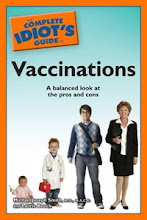When I pick up the phone, the friendly woman's voice greets me in Russian. Or maybe it's Romanian? Or Polish? Then she begins a long discussion about an upcoming medical appointment in the mystery language. I know this because she mentions my name and a local medical center in English. She calls about once a month, a glitch in some health care provider's electronic appointment reminder system.
Ah, medical information technology. I still can't decide whether I like it or not. At my daughter's pediatrician's office, I wonder why they're still using a giant, scribbled-over paper appointment book and paper folders to hold medical records. Then I remember that a shift to appointment scheduling software and electronic medical records could mean technology glitches like my periodic Russian phone calls and the imposition of a laptop screen between the doctor and me when we talked. On the other hand, I reason, it's incredibly useful when a doctor I'm visiting can pull up electronic test results from another doctor I saw recently. Yet this easy access is also creepily Orwellian. How many people, exactly, do have access to my medical information? And what are they doing with it?
Sometimes, medical IT practices can cause real harm. A recent article in JAMA analyzed how radio frequency identification (RFID) devices, used to identify patients and equipment, can also interfere with medical equipment used to treat and manage medical problems. My daughter and I received RFID wristbands when she was born, in order to make sure that no unauthorized person took her from the hospital. Could the wristbands’ signals have interfered with the lifesaving equipment used on the infants in the neonatal ICU down the hall? Possibly, according to JAMA.
As I sort through my own opinions about information technology and medicine, the technology marches forward relentlessly. At the moment, the Markle Foundation, a public/private collaborative studying IT, health, and national security issues and endorsed by WebMD, the
Monday, June 30, 2008
Good Technology, Bad Technology
Saturday, June 28, 2008
Infertility, Public Health, and Private Choices
Infertility is an increasingly common problem for many couples in the U.S, but infertility treatments are creating new problems, according to a report released last week by the CDC. In 2005, the most recent year with statistics available, assisted reproductive technologies (ARTs) such as in vitro fertilization had a 35% success rate (i.e., 35% of treatments resulted in a live birth). Forty-nine percent of these births were multiples (twins, triplets, or higher).
The public health cost of ART preterm births was approximately $1 billion in 2005, or an average of $51,600 per infant, the report stated. One percent of allU.S.
Addendum - July 17, 2008
The public health cost of ART preterm births was approximately $1 billion in 2005, or an average of $51,600 per infant, the report stated. One percent of all
In the report “Assisted Reproductive Technology Surveillance – United States, 2005,” the CDC analyzed data from 89% of the 475 medical centers that treat fertility problems with assisted reproductive technologies.
The report stated that many ART medical centers are working to avoid multiple births in favor of singleton births by implanting fewer embryos at a time, but others are bowing to patient and marketing pressures to increase their success rate by implanting numerous embryos at once.
Successful fertility treatments themselves increase the number of children who are as genetically vulnerable as their parents were to infertility problems as adults. Successful treatments therefore create a new generation of customers for infertility clinics, and, barring medical advances in ARTs, fresh public health costs in the future.
There are alternatives. For a couple unable to conceive, adoption can help them build a family – a choice that helps both individuals and society. Considering the public health cost of ARTs and the dismal failures of the U.S. foster care system, it is in the government’s best interest to take two steps: regulate the use of multiple embryos in ART, and promote and streamline the domestic adoption process.
Addendum - July 17, 2008
Preterm birth can also have long-term consequences on an infant. Today, the New England Journal of Medicine published an article about the "Long-Term Medical and Social Consequences of Preterm Birth" among preterm infants followed to adulthood in Norway. Among this group, there was a significantly increased risk for cerebral palsy, mental retardation, and dependence upon disability payments as adults if they were born at 23 to 27 weeks. The abstract concluded that "the risks of medical and social disabilities in adulthood increased with decreasing gestational age at birth."
Subscribe to:
Comments (Atom)



